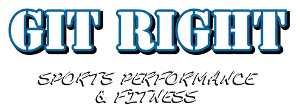Muscle soreness is part of participating in activity but it should not be extreme because this could mean that an injury may have occurred. The amount of soreness that you feel during and after your workouts can vary based on what you are doing. Delayed-onset muscle soreness (DOMS) is prevalent in training so today we will get a better understanding of what it is just incase you are wondering why you woke up aching in your muscles. DOMS normally occurs 24 to 72 hours after exercise. Each time you workout or participate in activities, your muscle are contracting and relaxing. When you exercise, you cause exercise induced muscle damage followed by an inflammation-induced increase in fluid in the muscle that causes the muscle discomfort (Baechle, Thomas, & Earle, Roger, National Strength and Conditioning Association Essentials of Strength Training and Conditioning). Eccentric muscle action induces the most DOMS. DOMS is normally associated with a reduction in muscle strength and, following long duration aerobic running, may impair the ability of muscle to generate ATP from the oxidative processes for several weeks (Baechle, Thomas, & Earle, Roger, National Strength and Conditioning Association Essentials of Strength Training and Conditioning).
According to the American College of Sports Medicine (ACSM), the soreness is a result of microscopic damage to muscle fibers involved in exercise. ACSM also points out a misconception that DOMS is due to lactic acid accumulation, but lactic acid is not a component of this process. DOMS appear to be a side effect of the repair process that develops in response to microscopic muscle damage (Braun, William, and Sforzo, Gary, American College of Sports Medicine). As stated earlier, eccentric muscle action, where the muscle is lengthening under load, causes the greatest DOMS so activities such as strength training with a greater emphasis on the negative phase, walking, jogging or running down hills, and jumping are great examples. The greater the DOMS translates to the severity of forces placed on the muscle. In addition, the number of repetitions will cause different levels of damage and soreness. Everyone is subject to DOMS, however, the severity of soreness will vary based on how much your body has adapted to the specific imposed demand or in other words your body has become accustomed to the activity. Even people who have trained for years may still have soreness after a bout of exercise. Moreover, our bodies are great at adapting and with just one bout of exercise, our bodies develop a partial protective effect that reduces the chance of developing soreness in that same exercise or activity in the future (Braun, William, and Sforzo, Gary, American College of Sports Medicine).
When looking at DOMS the most common symptoms are temporary reduction in strength of affected muscles, tenderness to the touch, swelling of the affected limbs, and stiffness of the joint accompanied by temporary reduction in the joint’s range of motion. One of the ways that delayed onset muscle soreness can be controlled is by having a consistent physical activity program rather than doing sporadic, high intensity works, that overload your system is in detrimental way. Another way is to progress slowly in a new activity or training program that allows the muscle time to adapt to new stress and will help minimize the severity of DOMS but will not guarantee that it will not be present. A proper warm up and stretch is a great way to prepare the muscles for the activities. If you have a severe case of DOMS, rest and recovery because pushing through activities will lead to greater DOMS and possibly an injury, which is a major set back. If you find that DOMS makes it too difficult or too painful to perform the activity, then refrain from the activity for a few days and return to that activity as symptoms subside (Braun, William, and Sforzo, Gary, American College of Sports Medicine).
A few methods to ease the symptoms of DOMS is to use ice packs, massage, and acupressure. Keep in mind that these ease symptoms but this does not mean you are recovering. It means that the pain will be controlled and that you will be more comfortable, however, they key is to rest, reduce or refrain from the activity. Make sure to incorporate rest days into your training cycle to avoid training with server DOMS and to allow muscles time to repair. If you need help with your program design or don’t know where to begin make sure you schedule your free assessment and 30 minute workout. See you soon
